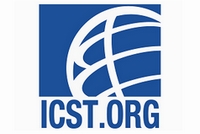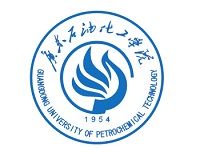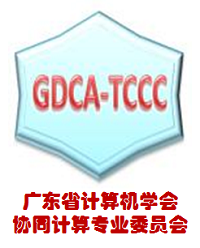Keynote Speakers:
Vincenzo Piuri, Università degli Studi di Milano, Italy
Nei Kato, Tohoku University, Japan
Hanna Bogucka, Poznan University of Technology, Poland
Jiankun Hu, University of New South Wales at the Australian Defence Force Academy, Australia
Information about Keynote Speakers:

Keynote: “Biometric Technology and Applications”
The use of biometric traits for security and secure applications (including personal identification, access control, forensics applications, e-commerce, e-government, and e-health) is receiving an increasing attention. The main reason for such an interest is that biometric features of individuals are tightly bound with their identities. Moreover, they cannot be easily forgotten or lost. Therefore they provide significant potentials in applications where both security and client convenience are needed. This keynote introduces the biometrics theory, technologies, and applications, with specific emphasis on a comprehensive system design methodology which takes into account the application requirements, including the need for privacy protection.
Vincenzo PIURI has received his Ph.D. in computer engineering at Politecnico di Milano, Italy (1989). He has been Associate Professor at Politecnico di Milano, Italy and Visiting Professor at the University of Texas at Austin and at George Mason University, USA. He is Full Professor in computer engineering (since 2000) and has been Director of the Department of Information Technology at the Università degli Studi di Milano, Italy. His main research interests are: fault tolerance, cloud computing, internet-of-things, digital processing architectures, embedded systems, arithmetic architectures, biometrics, pattern analysis and recognition, signal and image processing, machine learning, theory and industrial applications of neural networks, intelligent measurement systems, and industrial applications. Original results have been published in more than 350 papers in international journals, proceedings of international conferences, books, and book chapters.
He is Fellow of the IEEE, Distinguished Scientist of ACM, and Senior Member of INNS. He is Editor-in-Chief of the IEEE Systems Journal (2013-15), and has been Associate Editor of the IEEE Transactions on Neural Networks and the IEEE Transactions on Instrumentation and Measurement. He has been IEEE Director and IEEE Delegate for Division X, President of the IEEE Computational Intelligence Society, Vice President for Publications of the IEEE Instrumentation and Measurement Society and the IEEE Systems Council, Vice President for Membership of the IEEE Computational Intelligence Society, and Vice President for Education of the IEEE Biometrics Council. He has been elected 2014 IEEE Vice President-elect for Technical Activities.
He received the IEEE Instrumentation and Measurement Society Technical Award (2002) for the contributions to the advancement of theory and practice of computational intelligence in measurement systems and industrial applications, the IEEE Instrumentation and Measurement Society Distinguished Service Award (2008), and the IEEE Computational Intelligence Society Meritorious Service Award (2009).

Keynote Topic:D2D: Research Trend and Future Perspective
As driven by the proliferous development of media-hungry handheld devices and online applications, there has been an unprecedented consumer demand for faster and cheaper mobile broadband usage. Given the impossibility of meeting this demand by adding spectrum, researchers around the whole world are bending over backwards to squeeze out more data bits from the limited available frequency resources. Among various efforts towards this end, device-to-device (D2D) communication which allows mobile UEs in proximity to communicate directly via licensed/unlicensed band with/without the support from the operator, has gained intensive research interests from academia, industry, and standard bodies. In this talk, we present the opportunities for D2D to improve system capacity, enhance spectral efficiency, and increase coverage and connectivity, and identify the new challenges to co-existence and network management. In particular, we introduce our [Relay-by-Smartphone] concept and implementation for traffic relaying collaborating with UAS, and for load balancing in LTE-Advanced networks. Finally, we outline some research directions in the future wireless network.
Nei Kato(A’03-M’04-SM’05-F’13) received his Bachelor Degree from Polytechnic University, Japan in 1986, M.S. and Ph.D. Degrees in information engineering from Tohoku University, Japan, in 1988 and 1991, respectively. He joined Computer Center of Tohoku University at 1991, and has been a full professor with the Graduate School of Information Sciences since 2003. He became Special Assistant to the President of Tohoku University since 2013.
He has been engaged in research on satellite communications, computer networking, wireless mobile communications, smart grid, image processing, and pattern recognition. He has published more than 300 papers in peer-reviewed journals and conference proceedings. He will serve as elected Member-at-Large(2014-2017) on the Board of Governors, IEEE Communications Society. He currently serves as the Vice Chair of IEEE Ad Hoc & Sensor Networks Technical Committee, the Chair of IEEE ComSoc Sendai Chapter, the steering committee member of WCNC and a voting member of GITC, an editor of IEEE Wireless Communications(2006-), IEEE Wireless Communications(2006-), IEEE Network Magazine(2012-), IEEE Transactions on Vehicular Technology(2010-), and IEEE Trans. on Parallel and Distributed Systems(TPDS, 2011-). From 2013, he also serves as an Associate Editor-in-Chief of TPDS and IEEE Internet of Things Journal. He has served as the Chair of IEEE Satellite and Space Communications Technical Committee(2010-2012), the Chair of IEICE Satellite Communications Technical Committee(2011-2012), an editor of IEEE Transactions on Wireless Communications(2008-2013), guest-editor of many IEEE transactions/journals/magazines, a symposium co-chair of GLOBECOM’07, ICC’10, ICC’11, ICC’12, Vice Chair of IEEE WCNC’10, WCNC’11, ChinaCom’08, ChinaCom’09, Symposia co-chair of GLOBECOM’12, TPC Vice chair of ICC’14, and workshop co-chair of VTC2010. His awards include Minoru Ishida Foundation Research Encouragement Prize(2003), Distinguished Contributions to Satellite Communications Award from the IEEE Communications Society, Satellite and Space Communications Technical Committee(2005), the FUNAI information Science Award(2007), the TELCOM System Technology Award from Foundation for Electrical Communications Diffusion(2008), the IEICE Network System Research Award(2009), the IEICE Satellite Communications Research Award(2011), the KDDI Foundation Excellent Research Award(2012), IEICE Communications Society Distinguished Service Award(2012), IEEE GLOBECOM/WCNC/VTC Best Paper Awards, and IEICE Communications Society Best Paper Award(2012).
Besides his academic activities, he also serves on the expert committee of Telecommunications Council, Ministry of Internal Affairs and Communications, and as the chairperson of ITU-R SG4 and SG7, Japan. Nei Kato is a Distinguished Lecturer of IEEE Communications Society(2012-2014) and the PI of A3 Foresight Program(2011-2014) funded by Japan Society for the Promotion of Sciences(JSPS), NSFC of China, and NRF of Korea. He is a fellow of IEEE and IEICE.

Keynote Topic: Small Cells Deployment in TV White Spaces
The transition from analogue to digital television (DTV) largely finished in many countries has resulted in new kinds of unused spectrum. Owing to the need to manage interference between transmitters of the DTV multi-frequency systems, the typical network plan creates pockets of unused spectrum which is interleaved in frequency and space; a common term for this spectrum is TV White Spaces (TVWS). Small cells (pico- and femtocells) in cellular networks are envisioned as a method of traffic offloading in densely populated areas. They are supposed to cover small areas up to 200 m (picocells) or in the order of 10 m (femtocells), and therefore transmission power requirements in small cells are also moderate or low. Small cells can share frequency channels with macro cells, however interference between small cells and a macrocell is an issue. Moreover, uncoordinated spectrum sharing between small cells may cause interference between them, what further degrades the quality of service and the benefit of small cells deployment. TVWS provide an opportunity for such a deployment due to the fact that small cells meant for densely populated areas require low power. This keynote will address the problem of using TVWS for extending the capacity of future heterogeneous wireless networks, such as LTE and LTE-A networks in small cell scenarios.
Hanna Bogucka received the Ph.D. degree and the Doctor Habilitus degree in Telecommunications from Poznan University of Technology (PUT), Poznan, Poland in 1995 and 2006 respectively. Currently, she holds a position of a professor and a Deputy‐Dean for Research at the Faculty of Electronics and Telecommunications at PUT. Prof. Hanna Bogucka is involved in the research activities in the area of wireless communications: radio resource management, dynamic spectrum access, flexible, adaptive and cognitive radio, and energy-efficient wireless systems and networks. She has been involved in the projects funded by the Polish National Science Centre, Ministry of Science and Higher Education, and participated in the consulting for the Polish Telecomunication operator (Telekomunikacja Polska S.A.). She has been involved in multiple European 5th – 7th Framework Programme projects dealing with novel wireless flexible transmission techniques and cognitive radio technologies aiming at high spectral efficiency and handling energy efficiency, as well as in the European COST actions.
Prof. Bogucka is the author of over 100 papers, published in major IEEE journals and magazines, European journals and in the proceedings of international conferences. She is also the author of one book and a number of book chapters focusing on green communications and cognitive radio.
She is the member of the Editorial Board of the journal “Advances in Electronics and Telecommunications”, Publishing House of Poznan University of Technology and of the „Recent Patents on Telecommunications”, Bentham Science Publishers.
Prof. Bogucka is the member of the IEEE Kiyo Tomiyasu Award Committee. She has been the technical program committee member of major IEEE ComSoc and VTS conferences (ICC, Globecom, PIMRC, VTC) as well as of European ones (EUSIPCO, European Wireless, EuroMicro) over last years, and she has organized a number of special sessions at these conferences. She also acts as a reviewer for IEEE Transactions and Magazines.

Tutorial Topic:Cyber Security Fundamentals and Open Research Issues
Jiankun Hu is a Professor and the Research Director of the Cyber Security Laboratory, School of Engineering and IT, University of New South Wales (UNSW) at Canberra (also called UNSW at Australian Defence Force Academy, i.e. UNSW@ADFA), Australia. He received the B.E. degree from Hunan University, Changsha, China, in 1983; the Ph.D. degree in control engineering from the Harbin Institute of Technology, Harbin, China, in 1993; and the master’s degree in computer science and software engineering from Monash University Australia in 2000. He was with Ruhr University, Bochum, Germany, where he was a prestigious German Alexander von Humboldt Fellow from 1995 to 1996; a Research Fellow with the Delft University of the Netherlands, Delft, The Netherlands, from 1997 to 1998; and a Research Fellow with the University of Melbourne, Parkville, VIC, Australia, from 1998 to 1999.
His main research interest is in the field of cyber security, including biometrics security, where he has authored many papers in high-quality conferences and journals, including the IEEE TRANSACTIONS ON PATTERN ANALYSIS AND MACHINE INTELLIGENCE, IEEE TRANSACTIONS ON COMPUTERS, IEEE TRANSACTIONS ON DISTRIBUTED AND PARALLEL AND SYSTEMS, and IEEE TRANSACTIONS ON INFORMATION FORENSICS AND SECURITY. He has served in the editorial board of up to seven international journals, and served as the Security Symposium Chair of the IEEE flagship conferences of the IEEE ICC and the IEEE Globecom. He has received seven Australian Research Council (ARC) Grants, and is currently serving at the prestigious Panel of Mathematics, Information and Computing Sciences, ARC Excellence in Research for Australia (ERA) Evaluation Committee.
Relevant free research software and databases in cyber security are available at








































